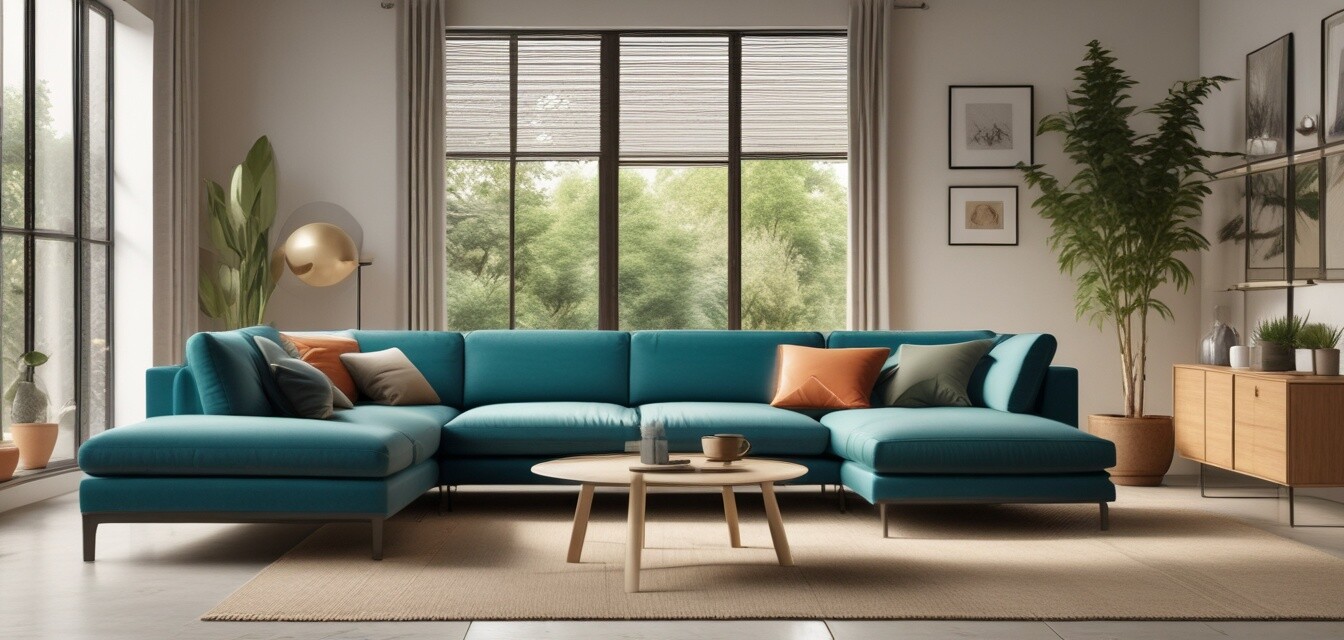
The influence of Gen Z on sustainable furniture choices
Key Takeaways
- Gen Z prioritizes sustainability and eco-friendly materials in their purchasing decisions.
- Social media influences their preferences for trendy and stylish furniture options.
- There is a growing demand for modular and multifunctional furniture among this demographic.
- Transparency from brands regarding sourcing and manufacturing practices is crucial for Gen Z consumers.
- Furniture choices reflect personal values and lifestyles, showcasing a commitment to environmental sustainability.
As we move into an era dominated by environmentally-conscious choices, the impact of Generation Z on the furniture market is becoming increasingly significant. This tech-savvy demographic is not only reshaping trends but also positioning sustainability as a non-negotiable factor in their purchasing decisions. In this article, we will explore how Gen Z's values and preferences are influencing trends in sustainable furniture, including TV stands.
Understanding Gen Z’s Values
Generation Z, born roughly between the mid-1990s and early 2010s, have grown up in a world increasingly aware of environmental issues. Their values reflect a profound concern for sustainability, ethical sourcing, and innovative designs. Unlike previous generations, Gen Z is more inclined to question the practices behind their purchases.
Eco-Friendly Materials
One of the most significant influences Gen Z has had on furniture choices is a demand for materials that are both stylish and sustainable. Let's take a look at some of the materials that resonate with this generation:
| Material | Why it Appeals to Gen Z |
|---|---|
| Bamboo | Fast-growing, renewable resource that looks great and is environmentally friendly. |
| Reclaimed wood | Helps reduce waste and gives a rustic charm while supporting sustainable practices. |
| Recycled metal and glass | Durable options that minimize environmental impact and often enhance modern designs. |
| Organic fabrics | No harmful chemicals, which is better for health and the planet. |
Social Media’s Role in Shaping Trends
Social media platforms play a pivotal role in influencing Gen Z's preferences. Platforms like Instagram and TikTok are filled with influencers showcasing stylish, sustainable furniture choices. This exposure has a direct impact on the types of products brands create.
Visual Appeal and Brand Engagement
When browsing through social media, Gen Z is drawn to visually appealing furniture. The brands that successfully create a strong online presence and engage their audience are the ones that thrive in this competitive market. Here are a few strategies brands use to connect with Gen Z:
- Impactful storytelling: Sharing the brand’s story and its commitment to sustainability.
- Interactive content: Conducting polls and quizzes to involve the audience in the design process.
- User-generated content: Encouraging customers to share photos of their furniture in their homes.
- Collaborations with influencers: Partnering with eco-conscious influencers to boost brand credibility.
Demand for Modular and Multifunctional Furniture
Another trend driven by Gen Z is the shift towards modular and multifunctional furniture. With many young individuals living in smaller spaces, the need for adaptable pieces that serve multiple purposes is crucial.
Benefits of Modular Furniture
Modular furniture offers various benefits that greatly appeal to Gen Z:
- **Space-efficient:** Perfect for apartments and smaller living areas.
- **Customization:** Can be reconfigured according to personal style or needs.
- **Sustainable options:** Often made from eco-friendly materials and can reduce waste.
Transparency is Key
Gen Z is known for its desire for authenticity. They are more likely to purchase from brands that are transparent about their materials and production methods. This demand for transparency includes:
- **Sourcing information:** Knowing where and how materials are obtained.
- **Manufacturing practices:** Ensuring fair conditions for workers.
- **Environmental impact:** Understanding the carbon footprint of the products.
Emerging Brands and Technologies
As the trend towards sustainability continues, several brands are emerging as leaders in eco-friendly furniture design. Innovations in technology also allow for better materials and processes. Here are some of the key shifts:
| Brand | Sustainable Practices | Innovative Designs |
|---|---|---|
| Brand A | Recycled materials, fair labor practices | Minimalist modern designs |
| Brand B | Bamboo and reclaimed wood products | Modular furniture solutions |
| Brand C | Transparency in sourcing | Customizable furniture options |
Conclusion
The influence of Generation Z on sustainable furniture choices is profound and multi-faceted. As eco-conscious consumers, their values shape the trends in the industry, from materials and designs to brand transparency. Understanding how Gen Z prioritizes sustainability will be essential for furniture brands looking to appeal to this demographic. As we move forward, sustainable practices will not just be a trend but a definitive standard in home furnishings.
Pros
- Increased focus on environmental sustainability.
- Innovative design options that encourage functionality.
- Encourages transparency from brands.
- Promotes the use of eco-friendly materials.
Cons
- Higher cost for sustainable materials and technologies.
- Limited availability of certain eco-friendly products.
- Potential for greenwashing in marketing strategies.
Explore More about Sustainable Living
Stay updated with the latest trends in sustainable furniture and home design by visiting our News and Trends section. You can also read our comprehensive Buying Guides for insights on choosing the best eco-friendly furniture for your home.